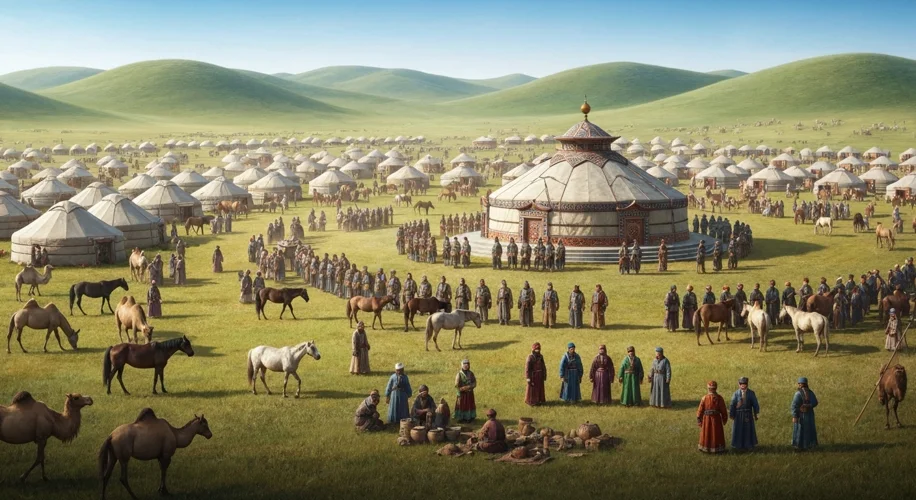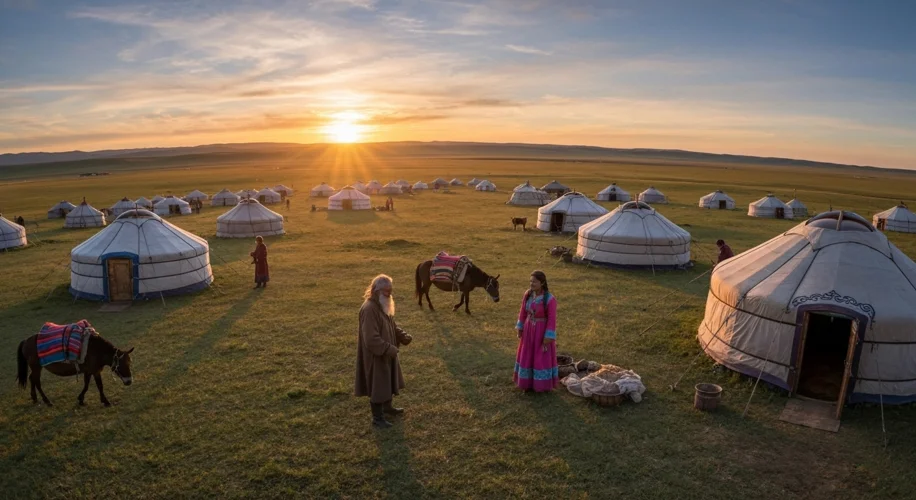When we think of empires, images of grand stone cities often spring to mind: Rome, Constantinople, Beijing. These were fixed points, centers of power, culture, and administration. But what about the empires forged by the vast, rolling plains – the empires of the steppe nomads? Did they too possess capitals? The answer, perhaps surprisingly, is yes, though not in the way we might conventionally imagine.
The concept of a ‘capital city’ for peoples whose lives were intrinsically tied to the movement of herds and the vastness of the open grassland seems, at first glance, contradictory. Yet, the nomadic empires, from the Scythians and Sarmatians of antiquity to the Mongols and Turkic khaganates of the medieval era, developed sophisticated systems of governance and identity that required focal points. These weren’t sedentary cities of brick and mortar, but rather dynamic, living centers that followed the rhythms of the nomadic lifestyle.
For many steppe peoples, the ‘capital’ was not a place but a person: the Great Khan or Khagan. His presence, surrounded by his retinue, military, and a significant portion of the ruling elite, constituted the political and administrative heart of the empire. This mobile court, often a sprawling encampment, would shift its location based on the season, the availability of pasture, and strategic considerations. It was here that decisions were made, treaties were brokered, tribute was collected, and justice was dispensed.
The Mongol Empire, perhaps the most famous of the steppe powers, offers a prime example. While Genghis Khan himself primarily operated from a mobile court, his successors began to establish more semi-permanent centers. Karakorum, founded by Genghis Khan’s son Ögedai in the 13th century, served as a burgeoning capital. It was more than just a collection of yurts; it was a burgeoning administrative hub. Accounts from travelers like William of Rubruck describe a city with palaces, temples of various faiths, artisan workshops, and residences for officials. It was a place where envoys from distant lands were received, and where the vast administrative machinery of the empire was coordinated.

However, even Karakorum’s status as a fixed capital was relatively short-lived. As the Mongol Empire fractured into successor states – the Golden Horde, the Ilkhanate, the Chagatai Khanate, and the Yuan Dynasty in China – their capitals also shifted. For the Golden Horde, cities like Sarai Batu and later Sarai Berke on the Volga River emerged as significant centers, blending nomadic traditions with influences from the sedentary societies they governed.
These nomadic ‘capitals’ served crucial functions. They were loci of political authority, where the Khan and his advisors made decisions that affected millions across vast territories. They were also centers of economic activity, facilitating trade and the redistribution of tribute and spoils. Culturally, they were melting pots, drawing together people from diverse ethnic and religious backgrounds, fostering the exchange of ideas, technologies, and artistic styles. The presence of foreign embassies, religious leaders, and skilled artisans in these encampments or burgeoning cities underscored their cosmopolitan nature.
What is particularly fascinating is how these mobile or semi-mobile centers maintained a sense of continuity and identity. The regalia of the Khan, the sacred banners (like the “tug” or “sulde” in Mongol tradition), the unbroken lineage of rulers, and the customary laws all contributed to a symbolic continuity that transcended the physical location of the court. The legitimacy of the ruler, rather than the permanence of the city, was often the bedrock of the empire’s stability.
The legacy of these nomadic capitals is profound. They demonstrate that the concept of a ‘capital’ is not solely defined by stone structures but by the presence of organized political power, administrative function, and cultural cohesion. These ephemeral thrones, shifting across the steppes, were the engines of some of history’s most expansive and influential empires, proving that civilization’s heart could beat not only in a city but also on the wind-swept plains.

